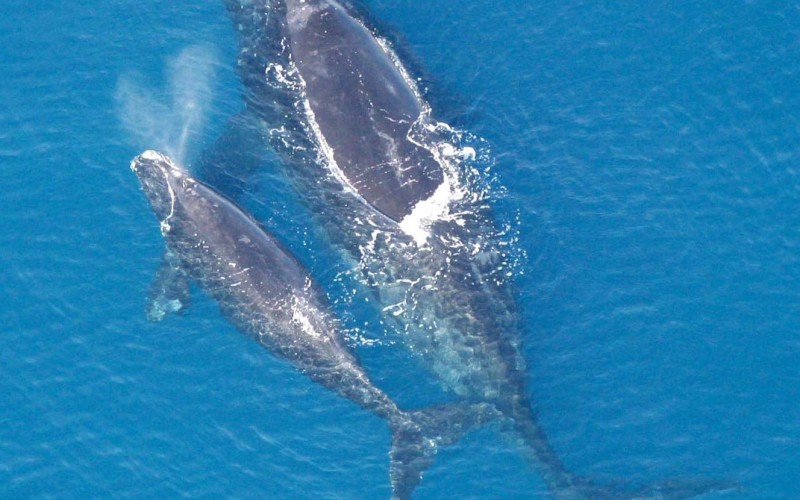As the National Oceanic and Atmospheric Administration tells it, a 14-year effort to reduce ship strikes that kill whales off East Coast ports is showing success.
On Oct. 19 NOAA announced a new online tool that shows how operators of various vessels — from recreational yachts to containerships — are obeying 10-knot speed limits in areas frequented by endangered North Atlantic right whales.
Those 10 “special management areas” from Massachusetts to Florida dictate that vessels over 65’ slow to 10 knots when making transits, with the goal of reducing fatal strikes on whales that are swimming near the surface.
Overall compliance with the speed rule is now up to about 80% of transiting vessels, compared to 50% when the speed rule first went into effect in 2008-2009, said Lauren Gaches, a spokeswoman for NOAA Fisheries.
That’s amid a heightened enforcement effort by NOAA’s Office of Law Enforcement, which uses automatic identification system (AIS) tracking of ships to catch speeders in the whale management areas. Uniformed NOAA officers also set up portable radar on shorelines near shipping channels to clock passing ship speeds — and even use highway patrol-style radar on small boats.
More than $900,000 in civil penalties have been levied on vessel operators in the just past year, although NOAA officials could not immediately say how much of that has been collected.
A few hours before NOAA issued an optimistic progress report, the environmental group Oceana put out its own critique. That analysis “found that 84% of boats sped through mandatory slow zones, and 82% of boats sped through voluntary slow zones. This report, which provides an update from Oceana’s 2021 analysis, shows that stronger safeguards and increased enforcement are needed to save North Atlantic right whales,” the group said.
“If NOAA wants to save this species from extinction, ships must slow down when these whales are present, and speeding boats must be held accountable. Time is of the essence before North Atlantic right whales reach the point of no return,” said Gib Brogan, campaign director for Oceana.
How can those conclusions be so divergent? It’s all in how you crunch the numbers, said Brogan. The NOAA and Oceana reports differ in the methodology each use to measure compliance with the rule.
The NOAA findings are presented through a new online digital “dashboard” that allows users to examine vessel speeds in special management areas over time. It provides a summary through 2022-2023. Oceana’s analysis runs through the 2021-2022 season.
While both groups rely on AIS data, “our methods to classify speeding are different,” Brogan told WorkBoat.
“NOAA looks at the entire distance the boat travels inside the mandatory speed zone and uses a weighted average approach. Oceana uses a yes/no approach,” said Brogan. “A boat is considered speeding if they go over the speed limit twice (two data points over 10-knots).
“For example, using NOAA’s methodology, there was almost 79% compliance (or 21% non-compliance) in the 2021-22 season in the New York/New Jersey Seasonal Management Area,” said Brogan. In contrast, “Oceana’s analysis shows a much lower 12.9% rate of compliance during the 2021-22 season (reported in our report as 87.1% speeding on page 18),” said Brogan.
“It only takes one second for a speeding ship to strike a whale. We can’t rely on weighted averages when it comes to speeding,” Brogan contends. “Just like speed enforcement on our roads doesn’t account for the weighted average speed of the car’s trip. You’re either speeding, or you’re not.”
Both reports will play into the ongoing debate over NOAA’s proposal to extend speed limits down to vessels between 35’ and 65’ — a measure fiercely opposed by the charter fishing industry, recreational boatbuilders and other maritime interests with allies in Congress. Oceana is pushing for faster action on vessel speed limits, and said its new report shows a pressing need for it.
The Oceana activists’ case for extending the rule down to smaller vessels was bolstered by several incidents, including a 2021 case when a 54’ charter sportfishing yacht returning to St. Augustine, Fla., struck and killed a juvenile right whale, despite the captain and mate keeping visual and radar lookouts. They barely made it back to the inlet with eight passengers and grounded on a sandbar before sinking, a $1.2 million loss.




